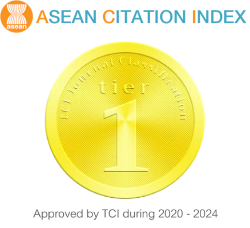ต้นทุนบริการผู้ป่วยฉุกเฉินวิกฤตของโรงพยาบาลภายใต้โครงการพัฒนาข้อเสนอ UCEP ด้านการเงินการคลัง
คำสำคัญ:
ผู้ป่วยฉุกเฉินวิกฤต, การเงินการคลัง, ต้นทุนการให้บริการบทคัดย่อ
การศึกษานี้มีวัตถุประสงค์เพื่อศึกษาต้นทุนบริการผู้ป่วยฉุกเฉินวิกฤตของโรงพยาบาล ภายใต้โครงการพัฒนาข้อเสนอ Universal Coverage for Emergency Patients (UCEP) ด้านการเงินการคลัง โดยการศึกษาต้นทุนครั้งนี้เก็บรวบรวมข้อมูลค่าใช้จ่ายจากรายงานทางการเงินและข้อมูลบริการ ปีงบประมาณ 2559 จากโรงพยาบาล 8 แห่ง ประกอบด้วย โรงพยาบาลในสังกัดกรมการแพทย์ 2 แห่ง และในสังกัดสำนักงานปลัดกระทรวงสาธารณสุข 6 แห่ง (เป็นโรงพยาบาลศูนย์ 4 แห่ง และโรงพยาบาลทั่วไป 2 แห่ง) คำนวณต้นทุนด้วยวิธีต้นทุนแบบดั้งเดิม (traditional cost method) และปรับใช้การคำนวณต้นทุนการบริการผู้ป่วยรายบุคคลด้วยวิธี cost matrix ซึ่งมี 2 ขั้นตอน คือ (1) กระจายต้นทุนจากหน่วยต้นทุนหลักไปยังผู้ป่วยแต่ละรายตามบริการที่ผู้ป่วยได้รับ (2) รวบรวมต้นทุนของการให้บริการผู้ป่วยแต่ละกิจกรรมเป็นข้อมูลรายบุคคล
ผลการศึกษา พบว่า โรงพยาบาลทั้ง 8 แห่ง มีผู้ป่วยอุบัติเหตุ-ฉุกเฉิน รวมทั้งสิ้น 82,811 ราย จำแนกเป็นผู้ป่วยอุบัติเหตุ-ฉุกเฉิน (สีแดง) 20,503 ราย ผู้ป่วยอุบัติเหตุ-ฉุกเฉิน (สีชมพู) 62,308 ราย สำหรับการวิเคราะห์ต้นทุนการให้บริการภาพรวมของโรงพยาบาลทั้ง 8 แห่ง พบว่า ค่าแรงมีสัดส่วนสูงที่สุด รองมาคือค่าวัสดุและค่าเสื่อมราคา เมื่อพิจารณาเฉพาะต้นทุนการให้บริการผู้ป่วยฉุกเฉินวิกฤต ซึ่งในการศึกษาครั้งนี้สามารถวิเคราะห์ข้อมูลในโรงพยาบาลรัฐขนาดใหญ่ได้เพียงแห่งเดียวคือ โรงพยาบาล A พบว่า ต้นทุนรวมของการให้บริการผู้ป่วยฉุกเฉินของโรงพยาบาล A เท่ากับ 472,317,273 บาท และมีผู้ป่วยฉุกเฉินวิกฤต 18,027 ราย คิดเป็นต้นทุนเฉลี่ยต่อรายเท่ากับ 26,201 บาท และต้นทุนเฉลี่ยต่อค่าน้ำหนักสัมพัทธ์ที่ปรับแล้วของกลุ่มวินิจฉัยโรคร่วม เท่ากับ 9,661 บาท
อย่างไรก็ตามวิธีการศึกษาข้อมูลต้นทุนด้วยวิธี cost matrix นั้นต้องการความสมบูรณ์ของข้อมูลบริการและข้อมูลค่าใช้จ่ายอย่างละเอียด ดังนั้น การศึกษาครั้งต่อไปควรพิจารณาถึงการปรับใช้วิธีคำนวณต้นทุนที่เหมาะสมกับระบบข้อมูลโรงพยาบาล เพื่อให้ครอบคลุมจำนวนโรงพยาบาลที่สามารถเป็นตัวแทนที่ดีและมีขนาดข้อมูลที่เหมาะสม
เอกสารอ้างอิง
Centers for Medicare & Medicaid Services. Emergency Medical Treatment & Labor Act (EMTALA) | CMS [Internet]. 2021 [cited 2021 May 8]. Available from: https://www.cms.gov/regulations-and-guidance/legislation/emtala.
National Institute for Emergency Medicine. Guideline for Universal Coverage for Emergency Patients (UCEP) [Internet]. [cited 2020 Aug 11]. Available from: https://www2.niems.go.th/th/Upload/File/256104091000232914_EtLeXFtU5mKNUd49.pdf. (in Thai)
Holliman CJ, Mulligan TM, Suter RE, Cameron P, Wallis L, Anderson PD, et al. The efficacy and value of emergency medicine: a supportive literature review. Int J Emerg Med 2011 Jul 22;4(1):44.
Garg N, Lathwal A, Gupta ShaktiK, Garg R. A study of cost incurred in providing emergency care services in an Apex Tertiary Care Hospital. Int J Res Found Hosp Healthc Adm. 2016;4(1):45-50.
Cots F, Castells X, García O, Riu M, Felipe A, Vall O. Impact of immigration on the cost of emergency visits in Barcelona (Spain). BMC Health Serv Res 2007 Jan 19;7(1):9.
Pham B, Teague L, Mahoney J, Goodman L, Paulden M, Poss J, et al. Early prevention of pressure ulcers among elderly patients admitted through emergency departments: a cost-effectiveness analysis. Ann Emerg Med 2011 Nov 1;58(5):468-478.e3.
National Institute for Emergency Medicine. Standard method and condition concerning emergency medical expenditure 30 March 2017. 2018 [cited 2018 October 4]. Available from: https://www2.niems.go.th/. (in Thai)
Chiangchaisakulthai K, Prakongsai P. Individual patient-level cost study: micro-costing method with cost matrix. Journal of Health Science 2015;24(5):1001-10. Available from: https://thaidj.org/index.php/JHS/article/view/547/478. (in Thai)
National Institute for Emergency Medicine. Act on Emergency Medicine 2008. [cited 2020 Aug 15]. Available from: https://www.niems.go.th/1/Ebook/Detail/16?group=15. (in Thai)
UCEP Coordination Center, National Institute for Emergency Medicine. The operating rights emergency crisis policies “emergency crisis. Eligible everywhere “(Universal Coverage for Emergency Patients: UCEP). 2018 [cited 2021 Sep 9]. Available from: https://www.niems.go.th/pdfviewer/index.html. (in Thai)
Bank of Thailand. Key Economic Indicators [Internet]. 2021 [cited 2021 May 20]. Available from: https://www.bot.or.th/App/BTWS_STAT/statistics/ReportPage.aspx?reportID=409&language=th. (in Thai)
Chiangchaisakulthai K, Wongsin U, Suanrueang P, Thumvanna P, Sakunphanit T. Healthcare expenditure burden for Emergency Medical Services of Private Hospitals under a Project of Financial Recommendation for Universal Coverage for Emergency Patients (UCEP). Journal of the Department of Medical Services 2019;44(5):95-102. (in Thai)
Khiaocharoen O, Zungsontiporn C, Khattiyod T, Baimuang C, Rusmeechan S, Pannarunothai S. Macro-and micro-costing of accident and emergency services for developing standard costing guideline. Journal of the Department of Medical Services 2020;45(4):226-35.
Charoenwiwatanakul D, Dajpratham P. Unit cost of inpatient stroke rehabilitation. J Thai Rehabil Med 2008;18(3):85–9.
Wongsin U, Suanrueang P. Unit cost of schizophrenia, schizotypal and delusional disorders. Journal of Heath Systems Research 2019;13(4):420-7.
Annear PL, Kwon S, Lorenzoni L, Duckett S, Huntington D, Langenbrunner JC, et al. Pathways to DRG-based hospital payment systems in Japan, Korea, and Thailand. Health Policy 2018 Jul 1;122(7):707-13.
ดาวน์โหลด
เผยแพร่แล้ว
รูปแบบการอ้างอิง
ฉบับ
ประเภทบทความ
สัญญาอนุญาต

อนุญาตภายใต้เงื่อนไข Creative Commons Attribution-NonCommercial-NoDerivatives 4.0 International License.
วารสารวิจัยระบบสาธารณสุขอยู่ภายใต้การอนุญาต Creative Commons Attribution-NonCommercial-NoDerivatives 4.0 International (CC BY-NC-ND 4.0) เว้นแต่จะระบุไว้เป็นอย่างอื่น




